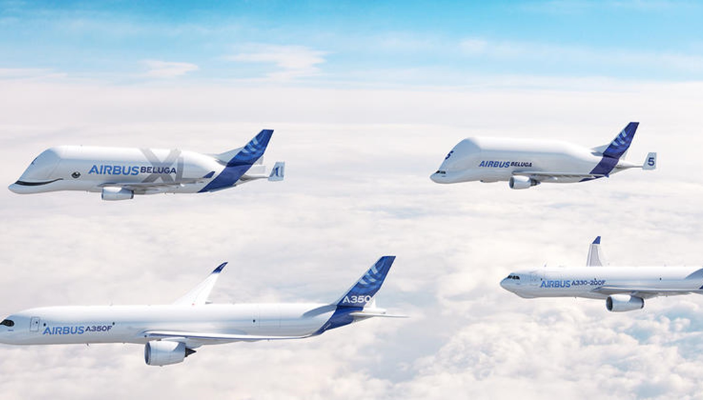Airbus is more than just a name in aerospace—it’s a cornerstone of global aviation, engineering progress, and international collaboration. As one of the world’s leading aircraft manufacturers, Airbus continuously evolves how people, goods, and ideas move across the skies. This article takes a clear and thoughtful look at Airbus’s role in aviation, its technology, partnerships, and sustainable future.
Airbus at a Glance
[Company Overview and Global Presence]
Founded in 1970 and headquartered in Toulouse, France, Airbus is a multinational corporation that designs, manufactures, and delivers commercial aircraft, helicopters, satellites, and defense systems. With operations spanning Europe, Asia, and North America, Airbus has grown into a global brand recognized for its engineering precision and strategic vision.
Key Divisions:
- Commercial Aircraft – known for the A320, A350, and A380 families
- Defense and Space – working on fighter jets, military transport, and space systems
- Helicopters – serving civil and military applications globally
Airbus employs more than 130,000 people worldwide and supports thousands more through its supply chain and partnerships.
Commercial Aircraft: Engineering Efficiency
[Airplane Models, Passenger Experience, and Safety]
Airbus is perhaps best known for its commercial aircraft lineup, which is used by airlines across the globe. Each aircraft model is designed with a focus on fuel efficiency, aerodynamics, safety systems, and passenger comfort.
Notable Aircraft Models:
- A320 Family: One of the world’s best-selling single-aisle aircraft, widely used for short to medium-haul routes.
- A350 XWB: Built with advanced carbon-fiber composites, the A350 is designed for long-haul efficiency and lower emissions.
- A380: The world’s largest passenger jet, known for its double-deck design and ability to carry over 800 passengers in all-economy configurations.
Focus on Passenger Experience
Modern Airbus aircraft feature quieter cabins, advanced air filtration, mood lighting, and ergonomic seating—factors that contribute to a healthier and more enjoyable flying experience.
Advancing Aerospace Technology
[Digital Design, AI, and Manufacturing Systems]
Airbus invests heavily in research and development to refine how aircraft are built and operated. From digital twins in engineering to AI-powered predictive maintenance, Airbus integrates advanced technologies throughout its processes.
Innovation Highlights:
- Fly-by-Wire Systems: Airbus introduced this digital flight control system to improve safety and reduce pilot workload.
- Skywise Platform: A data analytics tool used by airlines to optimize operations, maintenance, and fuel efficiency.
- 3D Printing & Robotics: Used in component manufacturing to reduce waste and shorten production cycles.
Airbus also leverages augmented reality (AR) for technician training and virtual reality (VR) for cockpit design, helping accelerate innovation timelines.
Sustainability in Focus
[Climate Goals and Low-Emission Solutions]
In response to global climate concerns, Airbus has positioned itself as a leader in sustainable aviation. The company has committed to achieving net-zero carbon emissions by 2050.
Initiatives in Progress:
- Hydrogen-Powered Aircraft: Airbus is actively developing a hydrogen-fueled commercial aircraft concept, aiming for service entry by 2035.
- Sustainable Aviation Fuels (SAF): Airbus aircraft are certified to fly with a 50% SAF blend, with efforts underway to increase this to 100%.
- Eco-Design Principles: Lightweight materials, aerodynamic improvements, and smarter systems contribute to overall fuel savings.
These commitments are more than marketing—they reflect Airbus’s investment in practical, scalable solutions for cleaner air travel.
Global Collaboration and Market Impact
[Partnerships, Supply Chains, and Trade]
Airbus’s success is deeply rooted in international cooperation. Its aircraft are built across multiple countries, involving a network of partners, suppliers, and subcontractors. For instance, wings may be made in the UK, fuselage sections in Germany, and final assembly completed in France or China.
Key Collaborative Efforts:
- European Union Projects: Airbus often partners with EU agencies on research in aerospace safety and innovation.
- Joint Ventures: Collaborations with companies like Bombardier and suppliers in the U.S. and Asia help Airbus expand its market and access new technologies.
- Defense Programs: Airbus contributes to NATO and European defense projects, including the Eurofighter Typhoon and unmanned aerial vehicles (UAVs).
This global footprint not only supports local economies but also insulates Airbus from regional market shifts.
Airbus and the Future of Flight
[Urban Mobility, Autonomy, and Next-Gen Concepts]
Looking ahead, Airbus is investing in concepts that go far beyond traditional commercial aviation. Their innovation strategy includes urban air mobility (UAM), autonomous flight, and hybrid-electric propulsion.
Forward-Looking Projects:
- CityAirbus NextGen: A fully electric air taxi prototype designed for urban commuting, expected to begin test flights soon.
- AutoFlight Systems: Airbus is researching autonomous aircraft technologies to reduce crew workload and enhance safety.
- ZEROe: A concept aircraft platform exploring hydrogen combustion, blended-wing body design, and hybrid systems.
These projects reflect Airbus’s broader vision of reshaping how transportation works in a digitally connected, environmentally conscious world.
Conclusion
[Balancing Innovation, Safety, and Sustainability]
Airbus remains a critical force in the global aviation industry—not just for the aircraft it builds, but for how it reimagines the future of flight. By combining technological innovation with environmental responsibility and collaborative strategy, Airbus continues to chart a path forward that aligns with global priorities and human needs.
As air travel grows and evolves, Airbus stands ready—not just to meet demand, but to set new standards for safety, efficiency, and progress.
